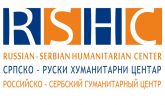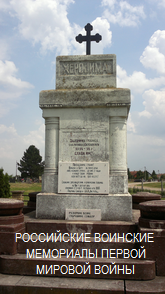The Treaty on the Non-Proliferation of Nuclear Weapons (NPT) is one of the cornerstones of the modern international security system. It is a unique international treaty that smoothly addresses a set of issues related to the non-proliferation of nuclear weapons, disarmament and cooperation on equitable terms in promoting the peaceful use of atomic energy. The NPT is an illustration of the effectiveness of multilateral diplomacy and it sets a standard for positive cooperation between the parties to the treaty in resolving global international issues.
Last year, on July 1, we marked the 50th anniversary of the date of opening the NPT for signature. Moscow was the venue of an international conference timed to this date. The foreign ministers of the NPT depository states – Russia, Britain and the US – made a joint statement in support of the treaty.
Next year, we will mark the 50th anniversary of the NPT coming into force. The NPT Review Conference is scheduled to take place ahead of this event.
The Russian Federation has invariably and consistently pursued a policy of strengthening the Treaty on the Non-Proliferation of Nuclear Weapons (NPT) in all of its three main components.
One of the most important tasks that must be resolved without delay is the convocation of a conference to declare the Middle East a region free of weapons of mass destruction, as was agreed at the NPT Review Conference in 2010.
We are making the necessary efforts for the region’s interested countries to start this dialogue. It is important to hold the conference before the end of this year and we believe this will happen.
Another important task is the consistent implementation of the Joint Comprehensive Plan of Action (JCPOA) on the Iranian nuclear programme. This unique agreement from 2015, which was confirmed by the relevant UN Security Council resolution, should be strictly observed and serve as a positive example of resolving complex problems with reliance on the NPT.
Naturally, nuclear disarmament issues remain one of the agenda’s central items. Russia is showing a positive example in this respect as well. Being a consistent advocate of building a world free of nuclear weapons, the Russian Federation continues steadily reducing and limiting its nuclear arms. We are purposefully reducing the role of nuclear weapons in our national military doctrine. Fully implementing all of our commitments, including NPT Article VI, we share with other states the responsibility for preserving peace and enhancing global security.
Our practical contribution to nuclear disarmament is indicative and unprecedented in essence: Russia has reduced its nuclear arsenal by over 85 per cent compared with the Cold War peak. We have fulfilled all of our contractual obligations including the 2010 START Treaty. The aggregate potential of Russia’s strategic arms is even below this treaty’s limits for warheads and carriers.
It is important to recall the Intermediate Nuclear Forces Treaty (INF Treaty) that became the first document providing for the practical reduction of nuclear arms. We have fully destroyed two classes of land-based nuclear missiles. As a gesture of goodwill we even outdid our commitments under this treaty both in number and parameters.
In addition, Russia has cut down its arsenal of non-strategic nuclear arms by 75 per cent, and transferred them into the non-deployed category and concentrated them in its central depots within the limits of its national territory.
Russia’s involvement in international cooperation on the peaceful use of nuclear energy deserves special mention. This is unmatched both in scale and sophistication of technology. We are sharing most effectively our achievements in this area with all interested countries with a view to implementing their rights under Article IV of the NPT Treaty. Russia’s nuclear technology and innovative solutions are understandably evoking increased interest in the world. Today, the Rosatom State Corporation is building 36 energy units in 12 countries, being the world’s leader in this respect. We have signed framework intergovernmental agreements on the peaceful use of nuclear energy with 53 countries and on the construction of civilian nuclear facilities with 18 countries.
All vigorous actions in support of the NPT Treaty taken by Russia in strong partnership with its closest allies and partners in the CSTO, the CIS, the SCO and BRICS and its associates in the non-aligned movement and other responsible states certainly facilitate NPT Treaty provisions. They instill us with hope for the success of these joint efforts to maintain international security and strategic stability.
At the same time, today the US, its NATO allies and some other countries under their control are ignoring the opinion of the majority of the international community and have long pursued a diametrically opposite policy that is extremely detrimental for the NPT Treaty.
In the late 20th century, Washington initiated steps to dismantle the current system of international law in the area of non-proliferation and arms control. This became a serious destabilising factor for the NPT regime and the entire modern international security architecture.
In 2002, the United States withdrew from the cornerstone Anti-Ballistic Missile Treaty and started ignoring virtually all fundamental agreements in the area of strategic stability and arms control. The United States irresponsibly undermines the principles of multilateral equitable cooperation in resolving the most pressing international security matters that had been painstakingly developed and preserved for decades. For some reason, the United States decided that the system of international law is a burden for it and started imprudently establishing its own chaotic system and its own “rules-based” order. Naturally, this implies that, from now on, these rules will be dictated and, if necessary, revised on orders from Washington. Indicatively, not a single ally has reined in Washington so far. At the same time, there is no doubt that an overwhelming majority of UN member states perceive this innovation of international law on the part of the US as unacceptable.
Nevertheless, this has already impacted the review process regarding the NPT and is fraught with deleterious consequences for the upcoming Review Conference to be held in the year of the NPT anniversary.
In effect, the United States has tried to undermine or simply renounce virtually every multilateral agreement in the area of non-proliferation and arms control. All this is directly projected on the NPT review process.
Let’s analyse the current situation step by step. We will discuss the facts alone.
I have already spoken about the Weapons of Mass Destruction Free Zone and the Joint Comprehensive Plan of Action.
The Comprehensive Nuclear-Test-Ban Treaty (CTBT) is an important element of the nuclear weapons non-proliferation regime and an effective tool in the area of nuclear arms control. This Treaty is called on to serve the whole of humankind and cannot become hostage to some countries’ ill-conceived decisions.
Unfortunately, we are witnessing an entirely different approach on the part of the US. A state whose ratification is required for the Treaty to enter into force has officially declared that it will not ratify the CTBT.
This step was hardly unexpected in the context of the perpetual US inability to ratify this Treaty over the past two decades. This once again highlights the cynicism of US approaches: in its time, the Clinton administration proclaimed the CTBT as its foreign-policy priority, while the Trump administration easily voiced a diametrically opposite position.
Will it now be possible to preserve the CTBT? This is a big question. In any event, the US no longer has any moral right to make any demands of others in the context of nuclear test bans.
It would be useful if US allies, who cowardly avoid discussing the enactment of the CTBT, comprehended this.
Issues related to the Comprehensive Nuclear-Test-Ban Treaty require the most meticulous analysis as part of reviewing the NPT Treaty and must be included by all means in future draft final documents. Our American colleagues will be unable to dodge the discussion of the real state of affairs and the foreign policy missteps Washington keeps on making.
The United States continues to violate the key provisions of the NPT Treaty and is even pushing its allies to do the same. This evokes particular concern.
The misguided practice of “joint nuclear missions” of the NATO countries contains elements of planning for the use of nuclear weapons and acquiring the skills of handling US nuclear weapons with direct participation of representatives of non-nuclear states that host US nuclear arms on their territory. This is a glaring violation of Articles I and II of the NPT Treaty.
The United States’s transfer of its nuclear weapons to non-nuclear countries and the latter’s acceptance of these weapons is also a violation the treaty.
Such actions undermine the foundations of the NPT Treaty and create additional obstacles to nuclear disarmament.
This problem has only one solution – the return of all American nuclear weapons to US territory and a ban on their deployment abroad, as well as the elimination of the entire infrastructure allowing for their rapid deployment. At the same time, it is necessary to impose a full ban on any exercises whereby the military personnel of non-nuclear countries learn how to use nuclear arms.
The updated provisions of the US nuclear doctrine look very dangerous in the context of the NPT Treaty. Thus, the US has considerably expanded the options for when to use nuclear weapons under the doctrine, including a preemptive strike. Indicatively, for the first time the US nuclear doctrine does not clearly affirm Washington’s commitment to its obligations under the NPT Treaty.
In essence, US military thinking went back in time half a century – to the period when nuclear war was considered acceptable and winnable. In this context it is no surprise that Washington did not react in any way to our proposal of half a year ago to adopt a joint statement on preventing nuclear war.
Plans to develop new nuclear warheads of lower yield (nuclear warhead for the Trident-II SLBMs) and a new sea-based nuclear-tipped cruise missile were also announced in the US nuclear doctrine.
The US intends to deploy variable yield nuclear air bombs with enhanced precision in Europe. Nuclear arms with such characteristics are obviously designed to be “battlefield weapons.” This means that the US is deliberately lowering the threshold for using nuclear weapons, thereby increasing the risk of a nuclear conflict with disastrous consequences. I would like to draw the attention of our European colleagues to the following: it is your territory that is viewed by your NATO ally as a “battlefield” for using nuclear weapons. Isn’t it time for all of you to reflect on the precipice you are driving yourselves toward?
To be continued...
 Русский
Русский 






















